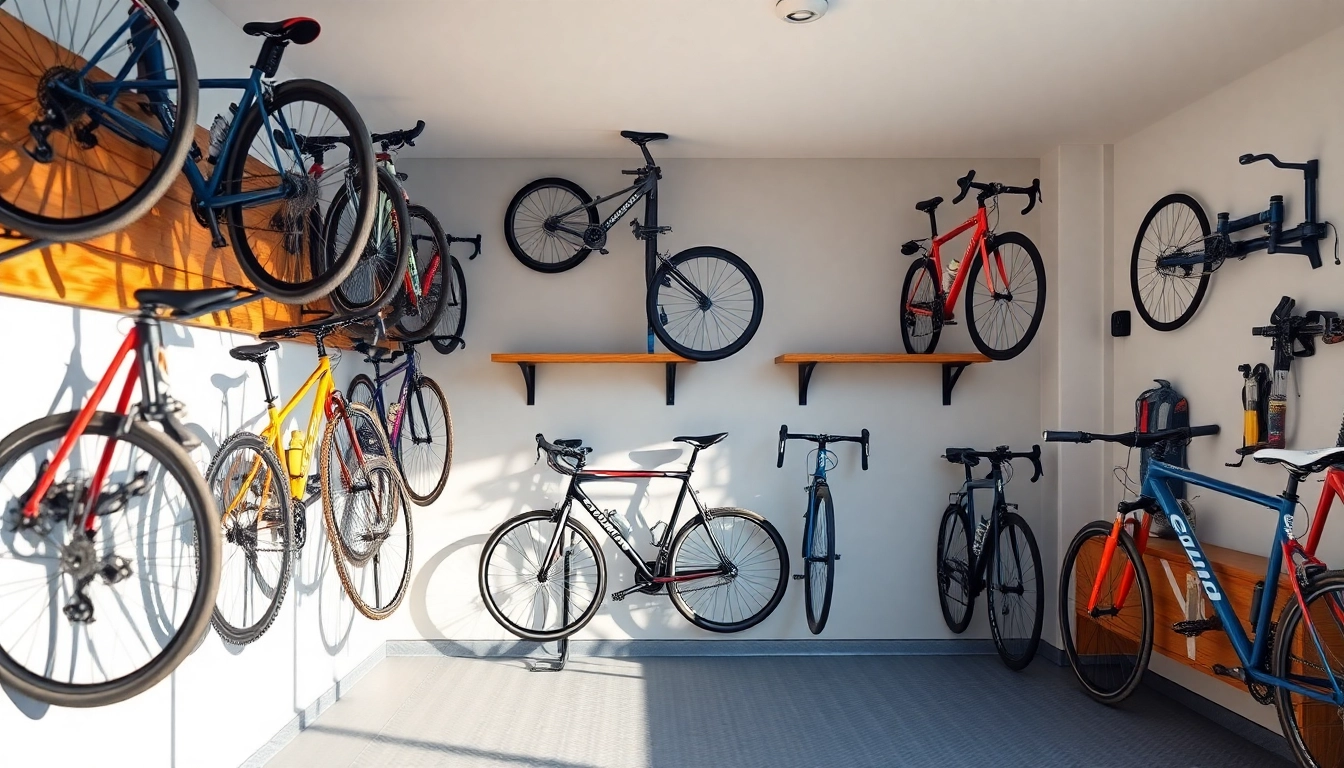The Basics of Wall-mounted bike storage
As urban living spaces continue to shrink, finding effective ways to store bicycles becomes increasingly vital. One popular and practical solution is Wall-mounted bike storage. This method offers homeowners, cyclists, and apartment dwellers an efficient way to utilize vertical space while keeping bicycles neatly organized. Understanding the fundamentals of wall-mounted storage and the benefits it provides is the first step toward maximizing space and convenience.
Understanding Wall-mounted bike storage and Its Benefits
Wall-mounted bike storage refers to systems designed to hang bicycles vertically or horizontally on walls. These systems can be quite diverse, ranging from simple hooks to more complex racks that accommodate multiple bicycles. The primary benefits of this type of storage include:
- Space Savings: Wall-mounted solutions utilize vertical space, making them ideal for garages, apartments, or other areas with limited floor space.
- Organization: These storage systems prevent clutter, keeping bicycles out of high-traffic areas and away from damage.
- Accessibility: Conveniently placed bikes allow for easy access, making it more likely that cyclists will use their bicycles frequently.
- Protective Features: Many wall-mounted systems come with protective elements to prevent scratches and damage to bicycles.
Choosing the Right Type of Wall-mounted bike storage
Selecting the right wall-mounted bike storage involves several key factors:
- Type of Bike: The design of your bike (mountain, road, etc.) may influence which rack or hook is suitable.
- Available Space: Measure your wall space and consider how many bikes you need to store. The dimensions will determine the rack or hook type you should choose.
- Weight Capacity: Ensure that the selected storage solution can handle the weight of your bike.
- Design Considerations: Some systems may offer aesthetic benefits, which could help integrate the storage solution into your home’s interior design.
Space Considerations for Effective Wall-mounted bike storage
When planning for wall-mounted bike storage, measurements and orientation are critical. Determine whether you will mount the bikes horizontally or vertically, which can impact how much space is required. Additionally, consider other stored items, such as tools or gear, and plan your layout to ensure accessibility and convenience.
Types of Wall-mounted bike storage
Vertical vs. Horizontal Wall-mounted bike storage
Wall-mounted bike storage systems can be divided primarily into vertical and horizontal setups. Vertical systems allow you to hang bicycles upright, saving valuable floor space. Conversely, horizontal systems lay bikes flat against the wall, which can often look more cohesive in certain settings but requires more width. Both designs have their pros and cons based on space availability and personal preferences.
Specialized Wall-mounted bike storage for Different Bike Types
When choosing wall-mounted bike storage, specific designs cater to various bike types. For instance, mountain bikes, road bikes, and children’s bikes all may benefit from specially designed attachments that accommodate their unique frame geometries and weight distributions. These solutions ensure secure and efficient storage that enhances preserving the bike’s condition.
Comparing Price Points of Wall-mounted bike storage Options
Budgeting for wall-mounted bike storage can vary significantly based on materials, brand, and complexities of design. Simpler hooks tend to be more affordable, while more sophisticated systems with added features such as adjustable arms or integrated storage solutions might carry a higher price tag. It is wise to consider how frequently you’ll use the bikes and weigh this against the costs of the storage solution.
Installation of Wall-mounted bike storage
Tools and Materials Needed for Installation
Installing wall-mounted bike storage may require a few basic tools and materials. Typically, you will need:
- Drill and drill bits
- Hammer
- Level
- Tape measure
- Screws and anchors (if needed)
- Stud finder (for locating wall studs)
Step-by-Step Guide to Install Wall-mounted bike storage
1. Select the Location: Identify the wall where the bike(s) will be stored. Ensure it’s free from obstructions.
2. Use the Stud Finder: Locate the wall studs to ensure a secure installation. Mark the locations with a pencil.
3. Measure and Mark: Measure the distance between the bike’s wheels and mark on the wall where the hooks or rack will be installed.
4. Drill Holes: Drill holes at the marked locations, ensuring that you’re drilling into the studs when possible.
5. Install the Hooks/Rack: Use the screws to attach the hooks or rack to the wall securely.
6. Leveling: Double-check that everything is level before securing it completely.
7. Test the Installation: Hang your bike on the installed storage and ensure it is stable and secure.
Common Mistakes to Avoid When Installing Wall-mounted bike storage
Even the best systems can be compromised if installed poorly. Common mistakes include:
- Failing to locate wall studs properly can lead to inadequate support.
- Not considering the bike’s height when planning the installation location.
- Overlooking spacing between bikes, which can make it difficult to remove or return bikes to the rack.
- Skipping the level check, which can lead to crooked installations.
Maintaining Your Wall-mounted bike storage
Cleaning and Upkeep Tips for Wall-mounted bike storage
Maintaining wall-mounted bike storage is crucial to ensuring its longevity and functionality. Regular cleaning includes:
- Wiping down the hooks or racks to remove dust and grime.
- Inspecting for rust or corrosion, especially in humid environments.
- Checking that screws and mounts are secure periodically.
Monitoring the Condition of Your Wall-mounted bike storage
It’s essential to routinely check the condition of your wall-mounted system. If you notice any signs of wear, such as loose screws or damaged hooks, address these promptly to avoid accidents or damage. An annual assessment can help you stay ahead of potential issues.
Adapting Your Wall-mounted bike storage Over Time
As your bike collection or needs evolve, it may be necessary to adjust your wall-mounted bike storage. This might include relocating the system, adding additional hooks, or even upgrading to a more advanced and flexible storage solution. Continuous adaptation ensures your setup remains user-friendly and effective.
Advanced Features and Innovations in Wall-mounted bike storage
Smart Technology in Wall-mounted bike storage
Recent innovations in wall-mounted bike storage include smart technology that can enhance the user experience. Features such as integrated lighting that activates when a bike is lifted, or sensors that notify users of excessive load, are becoming increasingly popular. These advancements will likely continue to gain traction, offering even more value to tech-savvy users.
Customizable Wall-mounted bike storage Solutions
Today’s bike storage solutions are often customizable. Users can mix and match components, such as hooks, shelving for gear, and additional tools, to create a setup tailored to their specific needs. This flexibility allows for personalized organization that makes sense for individual users and their unique space.
Case Studies of Innovative Wall-mounted bike storage Implementations
Several innovative implementations of wall-mounted bike storage can provide valuable insights and inspiration for when planning your own system. Examples include:
- Multi-Use Spaces: In many urban apartments, wall-mounted systems serve double duty as display fixtures for design aesthetics while providing functional storage solutions.
- Commercial Uses: Businesses are increasingly embracing wall-mounted storage to provide convenient bicycle parking without sacrificing valuable floor space.
Examining these cases illustrates how versatile and valuable wall-mounted bike storage can be, and offers a blueprint for implementing similar solutions in your own space.



